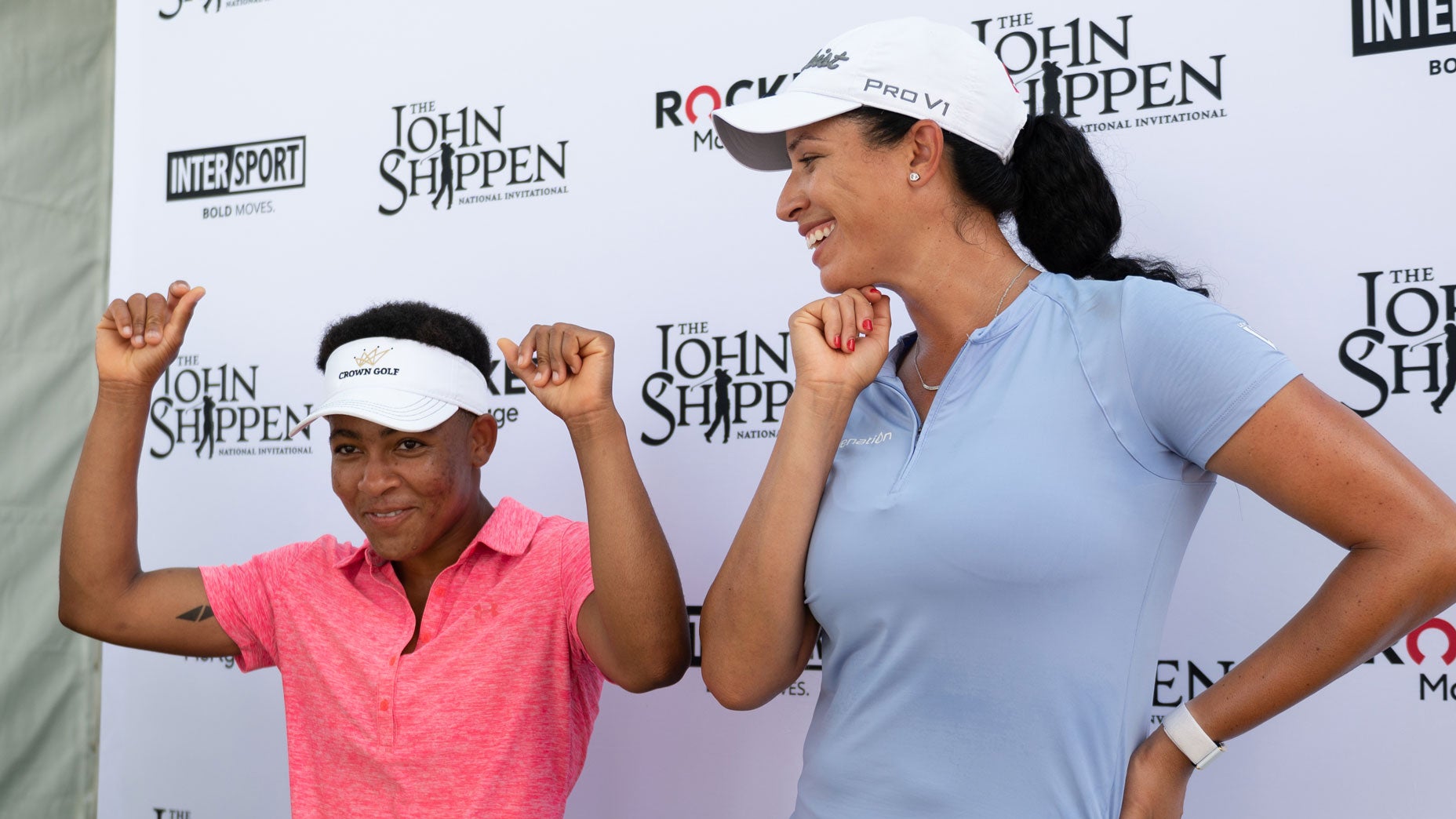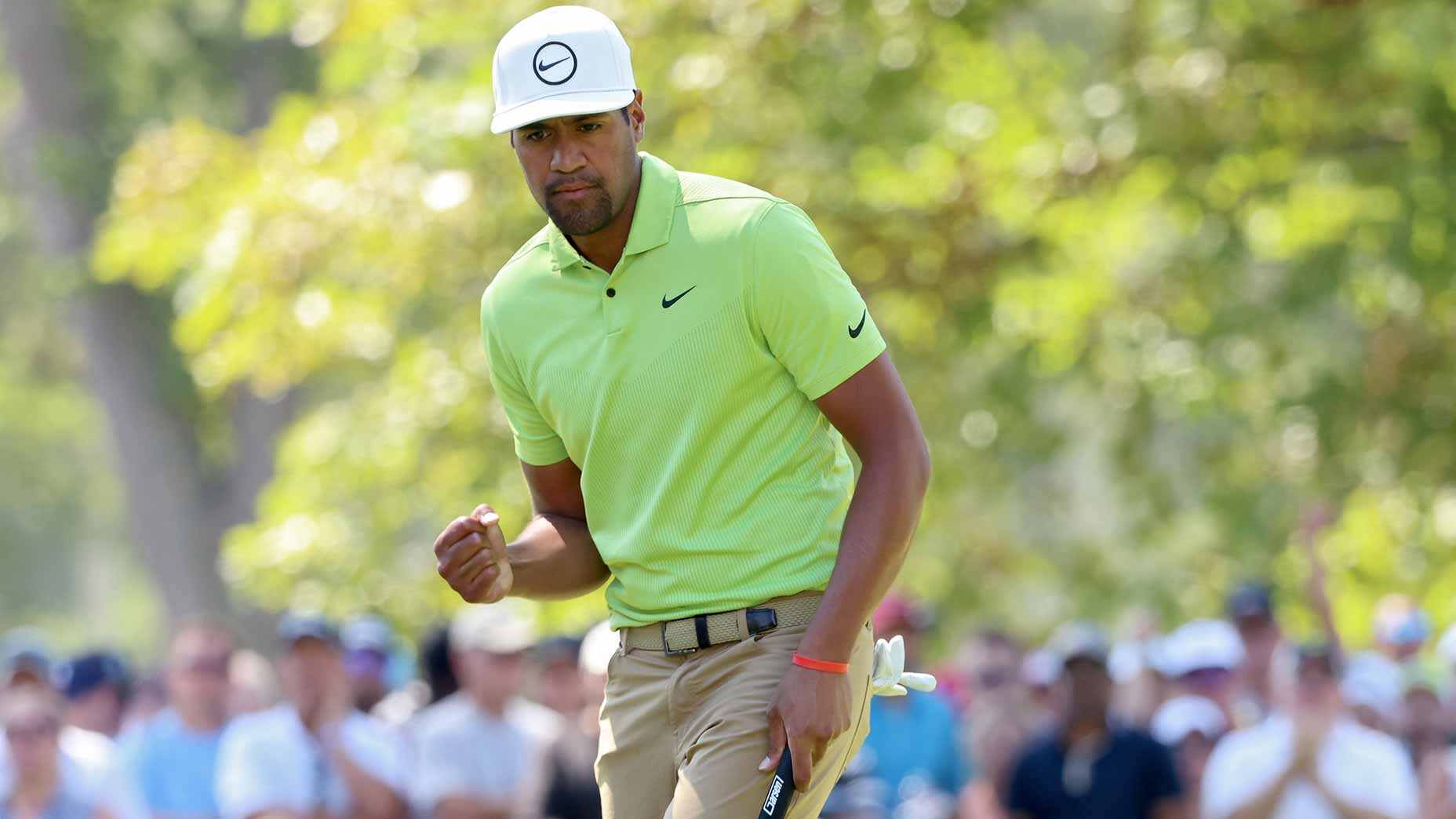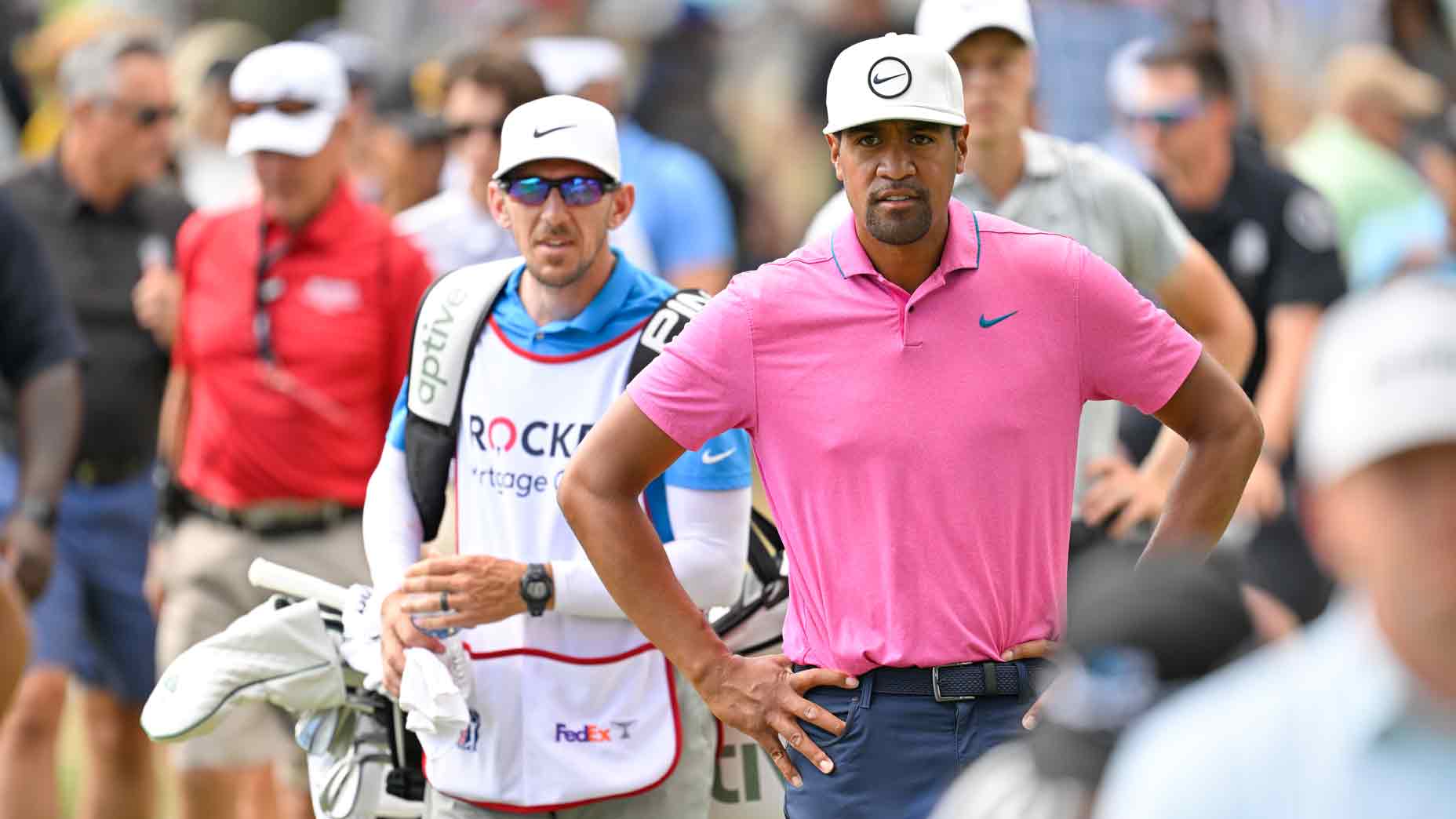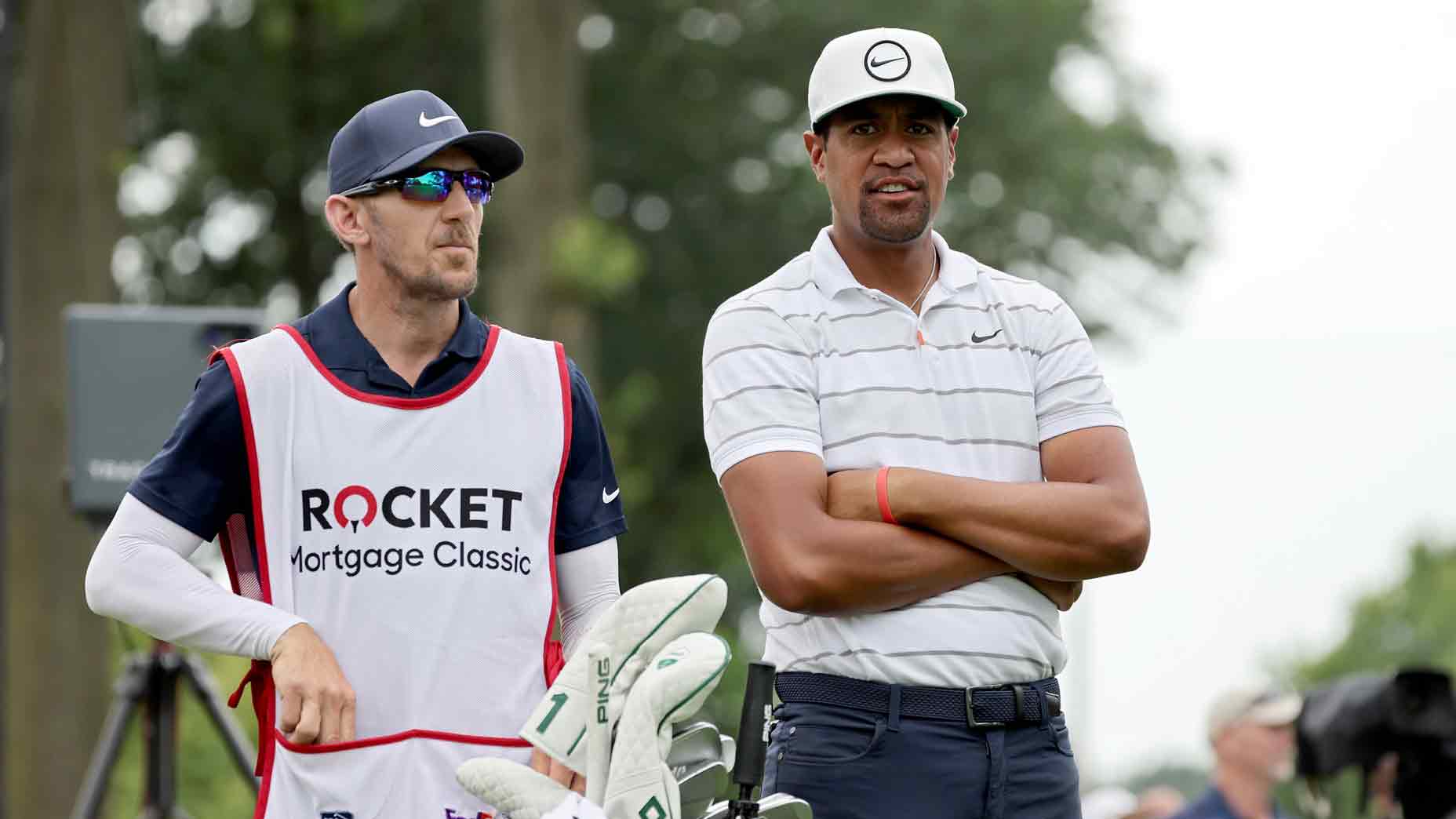DETROIT — The inaugural John Shippen, a golf tournament devoted to raising the profile of Black golfers in America, was not perfect.
A torrential downpour soaked the host site, Detroit Golf Club, for days and canceled practice rounds. A handful of caddies supplied by the event had no experience on the Donald Ross design; one was making his looping debut. Live, online scoring snafus made it unclear who was leading the event.
It’s OK, folks. Few things are perfect the first time around. And to most everyone involved, the leaderboard was almost beside the point. By the end of a steamy, humid afternoon, competitors and spectators alike seemed to agree on what The John Shippen represented: overdue opportunity.
That O-word was used frequently on the grounds Monday. Opportunities are essential in every pursuit, golf included. Every golfer on every tour has benefitted from some opportunity in their careers. That truth is literally the focal point of the event’s mission statement: “To create opportunities in golf for Black men and women.”
First, there is the glamorous opportunity that Timothy O’Neal, Shasta Averyhardt, Anita Uwadia and Amari Avery now have: an exemption into an elite pro event. O’Neal will tee it up Thursday at the Rocket Mortgage Classic, his first Tour start in more than six years. Averyhardt and Uwadia will get their chance at the LPGA’s Dow Great Lakes team event later this month and Avery will play in the LPGA Founder’s Cup this fall.
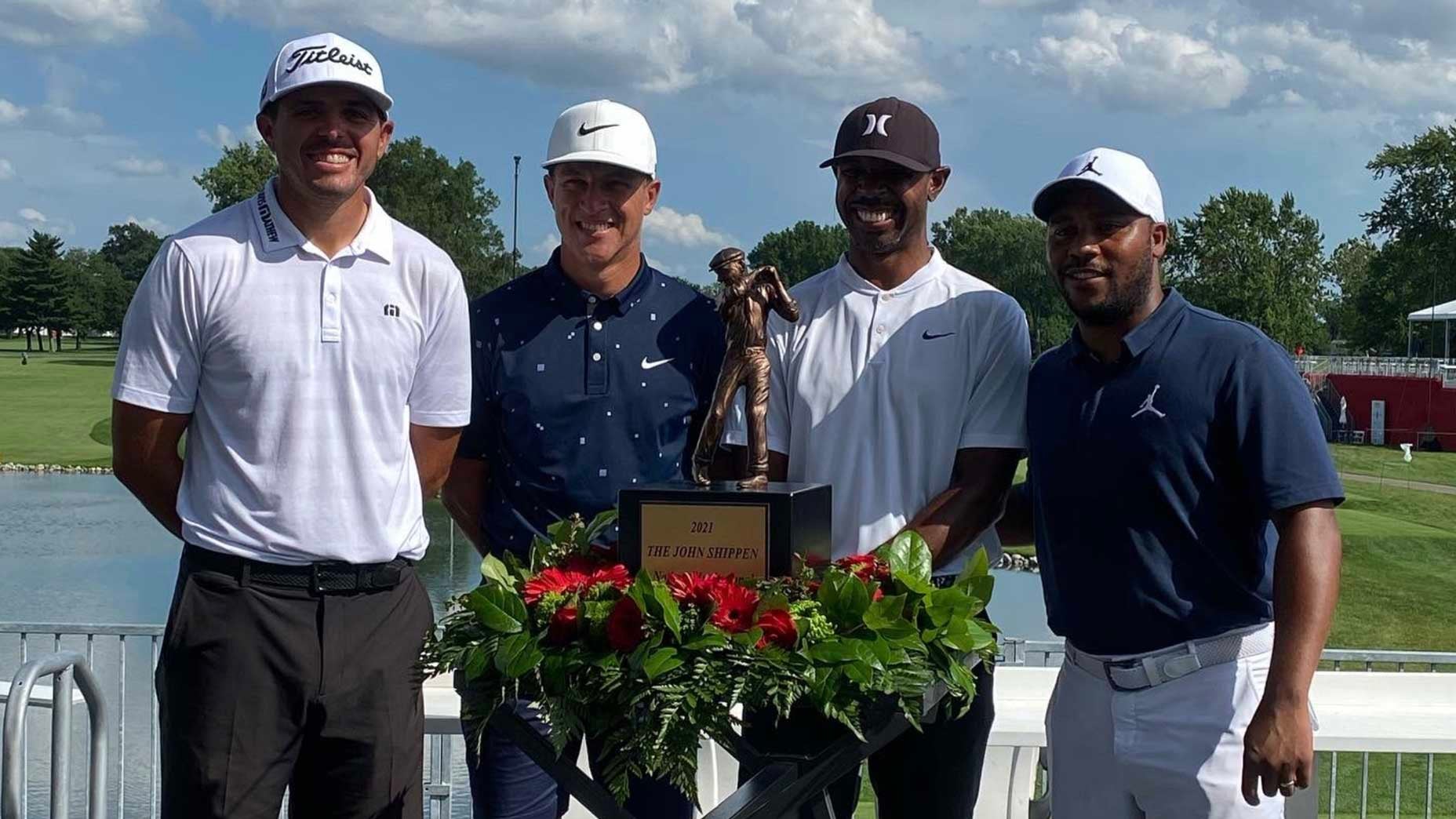
For Troy Taylor II, a rising senior at Michigan State, the Shippen was all about the grandstands. He’s a 21-year-old with more speed than he knows what to do with, and one of just a handful of Black golfers playing at Power 5 universities. But before this week he had never played a tournament with bleachers erected throughout the course. “Pretty much every time someone was around, I’d pull off some hero shot,” he said. Hero ball, to him, was going driver-driver-putter for eagle on 17 capped by a mini-roar from the stands.
For the entire field, there was the opportunity to play Detroit Golf Club, a PGA Tour host course, in tournament-level conditions. And for the spectators, look no further than the words of Cynthia Pickard, president of the Michigan Women’s Golf Association and the sweetest, wisest official scorer you could ever meet: “You’re kind of born into this world doing the things that your parents have done and what you are aware of. And you take advantage of those things that fit what you’ve learned as you grew up and gravitate towards those things. There are so many other experiences that we’re just not exposed to just because it’s not part of the culture. It’s not part of our communities. We miss out on a lot of chances to do other things because we just don’t know.”
Opportunity for Black golfers has deep roots here in Detroit. This city, which has one of the largest Black populations in the country, is where Joe Louis, the world-famous boxer, used to invite the best Black golfers in the country to compete in the 1940s. The Joe Louis Open, just like The John Shippen, paid for travel expenses and entry fees during a time when Black golfers were barred from competing in professional events.
Detroit Golf Club itself has sprung up out of a segregated past into a club many locals consider a symbol of modern Black excellence. Where Black membership was not even allowed until 1986, now the number of Black members is reportedly in the hundreds. Mark Douglas, the club’s 113th president, became the third Black man to hold the position when he assumed the post in 2019. Adding O’Neal to the field means five Black golfer will tee it at the Rocket Mortgage this week.
“It’s a start,” O’Neal said after the win. “Hopefully more tournaments will start doing something similar. It would be nice. But yeah, it is a step in the right direction. We’re not there yet, but it is a baby step and it is going in the right direction.”
“There” remains an enigma, but the game is moving in the right direction. Witness the scene Monday at Detroit Golf Club where hundreds of Black spectators watched 33 Black players in the field. Among the proudest in the gallery was Mulbe Dillard III, who watched his son, Mulbe IV, grind his way to a frustrating 77. “Don’t have kids, man,” he joked. “And if you do, don’t let them become golfers. This s—t is too stressful.”
The Dillard family will tell you all about the barriers that still exist in this game. Father and son have lived it together, with Mulbe IV being shunned at golf courses growing up — “unless I was playing well, no one would talk to me,” he said — and later on, they felt, by college coaches unwilling to take a chance on a Black golfer from Chicago’s South Side. “It’s always an uphill battle,” the father said with a heavy exhale. “But that’s life, man.”

This week, Mulbe was one of a few golfers who wore hats with ’1896’ across the front, an ode to the year Shippen first played in the U.S. Open at Shinnecock, despite threats of a boycott from white golfers, many of whom he beat. The headwear choice makes sense when you hear that in the 6th grade a young Mulbe wrote a report on Shippen and other barrier-breaking golfers. Ten years after filing that homework assignment, he played the best golf of his life during his spring semester at Florida A&M, banking a string of tournament exemptions that didn’t even exist 18 months ago, including invites to the Korn Ferry Tour’s Rex Open and multiple events on the Advocates Pro Golf Association Tour.
“I was the first one to do that,” Mulbe said. “That’s going to be something that goes on for a while. So to me, it’s the tours coming out of their comfort zone. Kind of knowing that there is the slightest bit of setback for minorities. Not necessarily talent-wise, but funds-wise. Equipment-wise. Opportunity-wise.”
There’s that word again.

